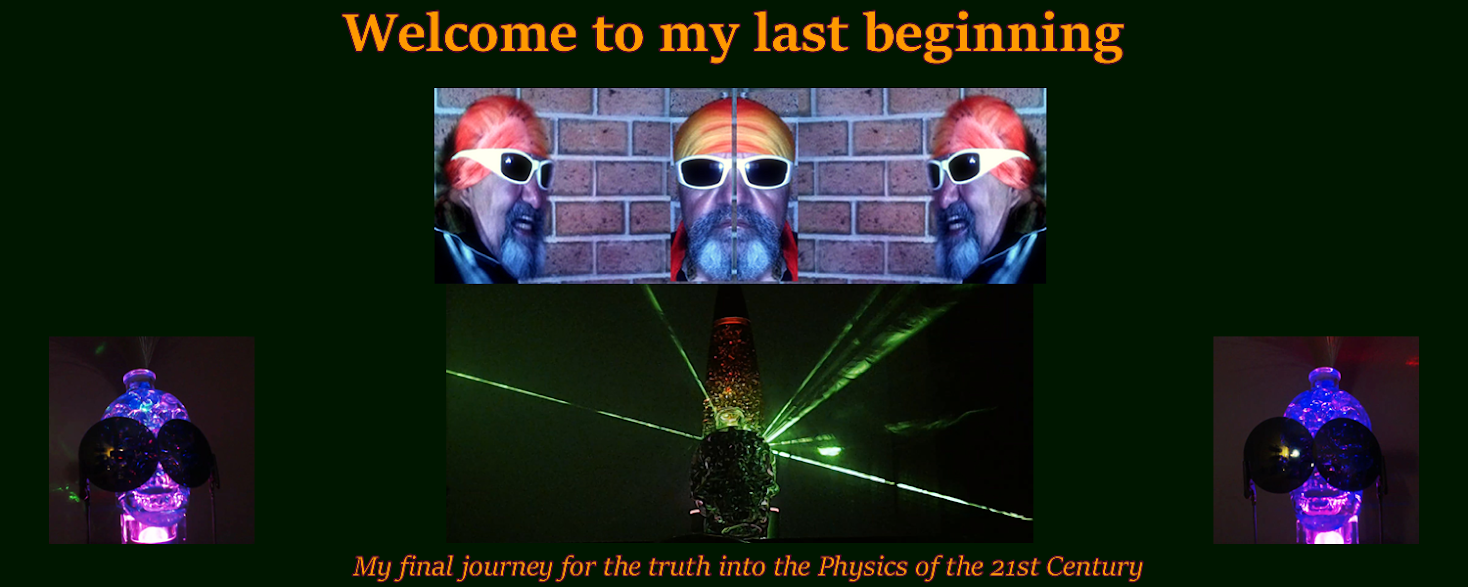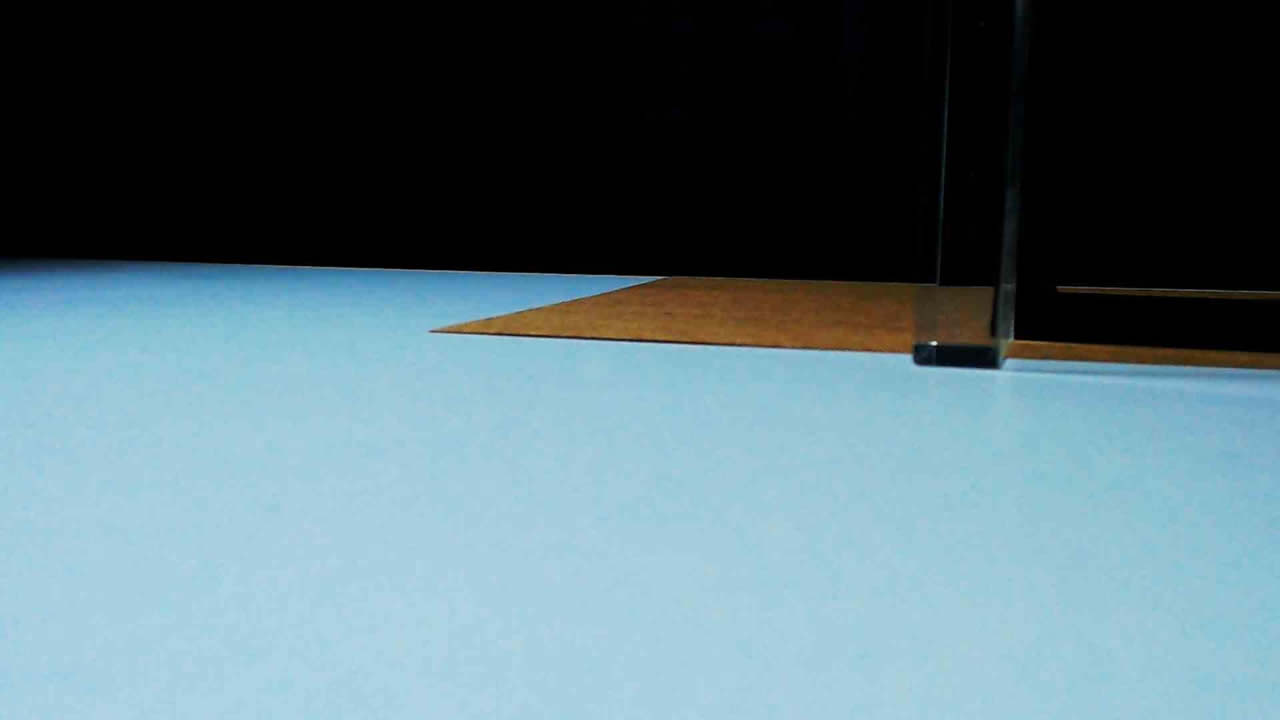Monday 11 July 2022
Marching inexorably towards the final goal. No ifs, no buts, no coconuts.
Friday 27 May 2022
Marching inexorably towards the final goal. Decisive prismatic experiments that will settle the matter. Part 2
The purist would be quick to argue that choosing to set up a prism at minimum deviation relative to G does not entitle one to claim that R and B are refracted in opposite directions in objective experiments. To that I'll reply by asking the purist to wait until the end of this post to bring that argument into discussion, for I'm willing to bet the two-dollar coin that I have in my pocket that by then he may be having serious second thoughts about its validity.
I love this picture. For a number of reasons. I love it first because there are 2 of everything in it. Then I love it because I can see a beautiful example that pokes a stick at the fragility of the conventional understanding regarding light and prismatic phenomena. You want me to tell you about it? OK.
There are very good reasons behind my belief that white light is formed by a spectral formation that lays longitudinally in BGR units. Light is forced, or perhaps guided, into those formations by the particular geometry of the spacetime at any given point in spacetime. For instance, you can't force the red light I marked in the picture above, into the marked area where the blue light is. Or, if you can, it is because by the time the red light is forced into the blue light's area, it is no longer red: it is categorically blue. Space (spacetime) drives, shapes and moulds the light it receives according to the geometrical constraints that are typical to the location. It simply couldn't be any other way of accommodating and propagating a field of light in the most efficient and simple manner that is characteristic to the God Universe.
Thursday 26 May 2022
Marching inexorably towards the final goal. The decisive prismatic experiments that will settle the matter. Part 1
There are two kinds of prismatic experiments: objective and subjective. Our entire understanding of light and colours is fully and unconditionally dependent and defined by those two kinds of experiments. This year marks exactly 350 years since Newton’s “...letter containing his new theory about light and colours” was published in the Philosophical Transactions, which is the event that introduced the Newtonian view of optics to the world, and which has remained ever since the mainstream theoretical understanding of all related phenomena.
In spite of all the opposition that Newton’s theory has faced in its 350-year reign there is not a single thing that has had any significant effect upon the mainstream establishment, and that basically means that, conventionally, we believe that Newton’s theory is as valid in 2022 as it was in 1672. Now, this 350-year-old status quo may be deemed unjust by many today (especially by those who believe that Goethe’s body of work is categorically worthy of an objective assessment and consideration). But the reality is that no decisive and irrefutable evidence has been brought forth as a truly viable alternative to the Newtonian view. Until today.
We have good reasons to believe that there is a decisive, conclusive, direct and simple way to find out once and for all if the Newtonian theory of light and colours is indeed the definitive descriptor of optical phenomena. This is the main objective of this post. In that quest we will present a number of simple prismatic experiments that will comprehensively test both Newton’s and Goethe’s theories, and ultimately unambiguously determine which, if either, is correct in their respective claims. The experiments that we'll present will address both objective and subjective observations, leaving in the process no room for any doubt about which (if either) of the two theories is a better descriptor of the optical phenomena.
The first experiment we’ll present consists of a subjective prismatic observation of a white rectangle placed upon a black background. (Figure 1)
What the observer will see upon conducting a subjective observation of the white rectangle in Figure 1 is thought to be well known and fully accounted by Newton’s theory. The reality, however, is totally different to the conventional belief, as you will see in a few moments. To that end, let us first present you with the image that the observer will see upon looking at the white rectangle through a triangular prism (prism oriented with its apex pointing to the left) from a distance of about 0.5m. (See Figure 2)
The two figures above contain everything we need to comprehensively determine which (if any) of the two competing theories can correctly account for the result of our experiment.
A Newtonian account of the image above would begin with-and from-the argument that the rectangle under observation appears white to the naked eye because the named rectangle is actually formed by an infinity of superposed rectangles of all spectral colours. This argument will then be followed thus. When that apparently white rectangle is passing through a prism in its way to the observer’s eye, all those infinite superposed rectangles of different colours will be refracted (in the same direction, toward the prism’s apex) by precise and unique amounts for each individual colour. Thus, if we take as an example only those four coloured bands that are flanking the white rectangle, the R rectangle is refracted the least (toward the apex of the prism), the Y one a little more than the R, the C rectangle a little more than the Y one, with the B rectangle being refracted the most. Finally, the Newtonian account would say that the reason that only four colours are visible through the prism is due to the fact that only those colours are not superposed with any of the other myriad of rectangular spectral hues, with the reason for the white display in the middle being the result of all that infinity of colours being once again superposed upon each other over that particular area of the image.
A Goethean account, on the other hand, would argue that the reason for the image depicted in Figure 2, is simply due to the fact that an observation through a prism of the white rectangle will basically create a double image of the original rectangle. Specifically, Goethe says that a prism refracts (or deflects) the entire image of the object under observation in a direction toward the apex of the prism, and the reason for those four visible colours is due to the fact that in one instance we look at the original white rectangle through a turbid medium (the prism), whilst in the other we look at the dark background that surrounds the original white rectangle, through a turbid medium (the prism) that contains a white copy of the original rectangle.
Next, we’ll look through our prism at the marked rectangle and thus find that the green lines are right on the borders between the R band and the Y one, and the C band and the B one, respectively. (See Figure 4) Thus we know exactly where the white rectangle is, which in turn means that we can now determine which-if any-of the two theories is correct.






















































